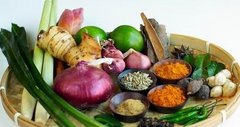A soft fluffy basic steamed bun is shaped into a peach shape and can be filled with a sweet filling of your choice is popular in the Chinese culture to represent longevity.
Shou means longevity and tao means peach. Why peach? It was back in the ancient times when the immortals have been given peaches that promise longevity. It was called peaches of immortality and to this date, the peach has been used as the symbol of longevity. So it is not uncommon to see fresh peaches or longevity peach steamed buns are gifted as birthday presents in the Chinese culture.
Ingredients:
For the bun dough:
- 300g plain flour
- 30g castor sugar
- 1 tsp instant yeast
- 170ml cold milk/water
- 8g vegetable oil
Colouring:
- tea strainer
- toothbrush
- 2 tsp water+ 2 drops pink colouring, for the buns
- green food colouring, for the leaves.
For the filling:
- 360g red bean paste, black sesame paste or any filling you like. You can buy ready made filling from Oriental shop or you can make the filling yourself. Divide in 30g each ball.
Method:
For the filling: It will be easier to handle the filling when it is chill. Roll into a balls of about 30g each balls. I place them in the freezer while making the bun dough.
For the bao bun: In a large bowl, mix in the cold milk along with instant yeast and sugar. Stir well until the sugar is completely dissolved.
Add in the flour and mix everything together, gather all small crumbs until it creates a dough ball.
Pour in the vegetable oil. It seems too much oil at first, collect all the oil in the bowl, and then continue kneading on a work surface for about 1 minutes. When you feel that the oil started to absorb completely, roll the dough into a long shape (like sausage). Then take left and right ends and fold it to the centre of the dough (repeat the same process for 2 times). The dough gradually will become really smooth. Do not overwork, this kneading process will only takes about 3-4 minutes.
Once the dough is ready, you can use it immediately. There is no need to rest the dough because by proofing it twice, it will cause a lot of air bubbles on the surface.
To fill & shape: Reserve 40g of the dough for the peach leaves and divide the rest into 12 equal pieces (about 45g to 48g each). Always cover the bun with a cling film to prevent from drying out.
Take 1 portions of the dough, press into a thick disk. Using a rolling pin, roll back and forth onto rectangular shape, fold into 2 equal shape pieces, turn 90º angle and repeat the same process 2 times.
Then roll the dough into a square shape, grab the dough with left hand and rolling pin on the other hand. Using the rolling pin, roll up and back flatten the edges of the dough while turn the dough a little by little (middle part should be slightly thick).
Place 1 portion of the red bean paste filling to the centre of the dough, gather the sides to enclose the bun and pinch to seal.
To shape the bun into peaches, flip the filled bun so the seam side is down and shape it to a smooth oval ball. Using your palms, form a peak on the top. To make the seam of the peach, gently press the bench scrapper in to create a line along the arch; pinch the top, mimicking the shape of the peach.
Cover the filled buns with a cling film and repeat this process with the rest of the dough and fillings.
For the bun leaves: Colour the 40g left over dough with green food colouring and divide it into 24 equal pieces. (about 2g each). Using bend scraper, flatten the cone. Form a line in the centre and create the leaf vein patterns tilts towards the cone.

Colour & decorate the bun: To create the pink shades of the buns, simply mix some water with a few drops of pink food colouring. Dip the toothbrush to the colouring mixture, tap off any excess onto a kitchen paper.
Hold the strainer upside down 2-3cm above the bun, the gently brush the toothbrush over the back of the strainer in a circular motion; repeat the same process until you get the desire colour shades.
Attached the leaves onto each peach bun with a ab of water, a pair for each bun. Place each bun onto a piece of baking paper.
Proof & Steam: Place the finished bun in the steamer; make sure you give some space in between the buns so they won't stick one another after fermentation or steaming. Cover and allow to rise for about 30 minutes to an hour depending on the temperature in the house.
After fermentation, the proofed buns should feel lighter and rise about 50% of their original size. If you gently press it with your finger, the dough will make a indentation and be able to slowly bounce back into shape.
Over medium high heat, steam the buns for 10-15 minutes. After 10 minutes, take the streamer off from the heat, DO NOT OPEN the lid and let it sit for another 5 minutes. If you open the lid immediately, the skin of the bun will get wrinkly.
Serve !





















































